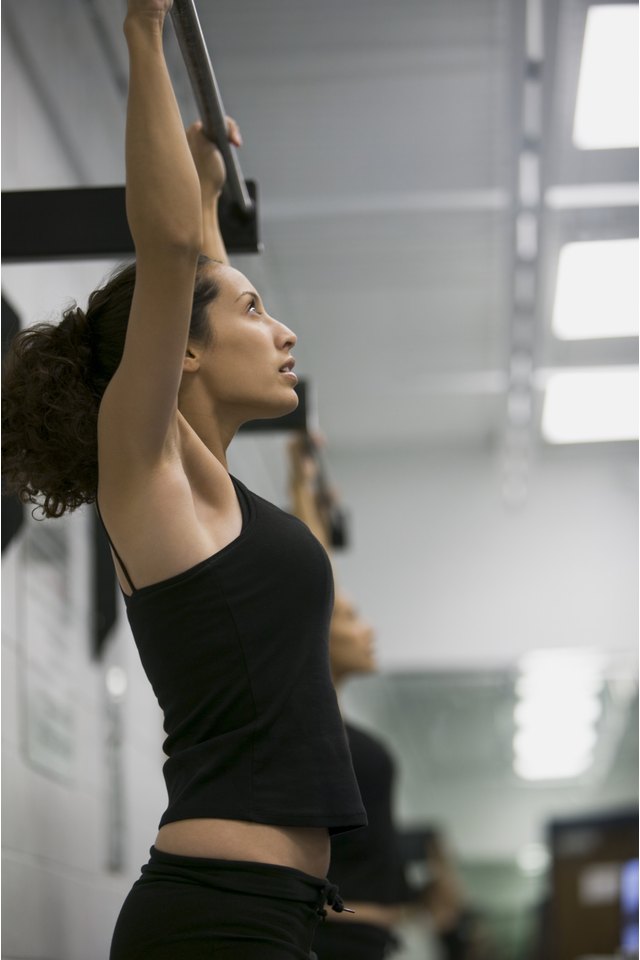The Antagonist Muscles in a Pullup

The pullup is one of the most challenging strength-training exercises to perform even though it only uses your body weight for resistance. This highly effective back strengthening move, like all strength exercises, requires the use of antagonist or opposing muscles to perform the flexing and extending motions of raising and lowering of your body.
Role of Antagonist Muscles
Most muscles in your body work in pairs with one being the agonist and the other being the antagonist. A particular muscle acts as the agonist in one action of an exercise and as the antagonist in the opposite action. When a muscle is the main target of an exercise and is required to flex to strengthen, it is called the agonist. The opposing muscle, which works to extend that muscle, is called the antagonist.
Execution
When performing a pullup, grasp the bar with an overhand wide grip. Exhale and slowly pull your body up until your chin is above the bar. Pause briefly, inhale and extend your arms and shoulders to return your body to the starting position. Since this is a particularly difficult exercise, you can start off by using an assisted pullup machine until you are able to fully lift your body weight in an unassisted pullup. The machine includes a lever you can kneel on that reduces the amount of body weight you are lifting during the pullup.
Antagonist Muscles Targeted
Regardless of whether you are performing an assisted or unassisted pullup, the main muscle targeted and the agonist is the latissimus dorsi. This is the broadest muscle in your back and it is responsible for pulling you up during the exercise. The pectoral muscles found in your chest are the antagonist muscles responsible for lowering your body. Because you also have to bend your elbows during the pullup, the biceps also serve as an agonist muscle, with the triceps playing the role of antagonist.
Exercise Variations
The placement of your hands and arms during the pullup determines how your lats and assisting muscles are targeted. A neutral grip, where your palms face each other on parallel bars is the easiest pullup variation. This grip allows you to recruit more upper body muscles including your delts, biceps and pectorals to assist you with the movement. Holding the bar with an underhand grip is actually referred to as a chin up. This grip places more emphasis on the chest and biceps. Bringing your hands closer together in a narrow grip, whether overhand or underhand, places less emphasis on your shoulders and is useful for people with previous shoulder injuries whereas a wide grip places more strain on your shoulders and is actually the hardest variation.
References
- WeMove.org: Overview of Muscles
- ExRx.net: Pull-Up
- 7 Weeks to 50 Pull Ups: Strengthen and Sculpt Your Arms, Shoulders, Back and Abs by Training To do 50 Consecutive Pull –Ups, Brett Stewart, pg 44
- Journal of Strength and Conditioning Research: Surface Electromyographic Activation Patterns and Elbow Joint Motion During a Pull-Up, Chin-Up, or Perfect-Pullup™ Rotational Exercise; James W. Youdas et al.
Resources
Writer Bio
Andrea Chrysanthou began writing professionally in 1993. Her work has been published internationally by "The Cyprus Mail," MochaSofa and My Favorite Trainer, among other magazines and websites. She holds a Bachelor of Applied Arts in journalism from Ryerson University. Chrysanthou is a certified fitness instructor and personal-training specialist with more than 10 years of experience in the fitness industry.
